
MINISTRY OF EDUCATION
AND TRAINING
VIETNAM ACADEMY OF SCIENCE
AND TECHNOLOGY
GRADUATE UNIVERSITY OF SCIENCE
-----------------------------
DOAN THI TRUONG NHUNG
RESEARCH OF LANDSCAPE ECOLOGY IN SON LA PROVINCE
TO SERVE SOCIO-ECONOMIC PLANNING AND DEVELOPMENT
Major: Ecology
Code: 9 42 01 20
SUMMARY OF BIOLOGY DOCTORAL THESIS
Hà Nội - 2018

This thesis was finished at:
Graduate University of Science and Technology – Vietnam Academy of Science and
Technology
Supervisor 1: Asc. Prof. DSc. Tran Dinh Ly
Supervisor 2: Dr. Ha Quy Quynh
Reviewer 1: ……………………………………………………………….
Reviewer 2: ……………………………………………………………….
Reviewer 3: ………………………………………………………………..
The theisis will be defended in Committee in front of the thesis assement
committee at Graduate University of Science and Technology – Vietnam Academy
of Science and Technology
at ….hour….. on …………date …..….month…….year 2018
The thesis shall be found at:
- The Library of Vietnam Academy of Science and Technology
- The Vietnam National Library

1
INTRODUCTION
1. The significance of study
Son La province locates in the North West of Vietnam, which is essential
geological position in socio-economic development strategy and protection of
national and regional security and defense. Moreover, Son La is ensuring national
and regional security and defense. Simultaneously, having the watersheds of Da and
Ma River, this province is the crucial protection area for the Northern Delta and has
the two largest hydropower projects in Vietnam. With the terrain predominated by
low mountain, highlands and valleys, abundance of land and climate resources, and a
special local knowledge system, Son La has great prospects for developing
agriculture, forestry, trade and tourism, bringing socio-economic and environmental
efficiencies.
However, low effectiveness of natural resource protection in Son La has
positive effects on other regions in the downstream of Da River and Ma River. In
recent 10 years, land use system and in structure of cultivated plants have been
change rapidly. In the province, land degradation has been more seriously, water
resource has been degraded; environment pollution caused by deforestation and
agricultural chemical and natural hazards have been more frequently and caused more
and more risks [84]. Thus, in long term strategy of socio-economic development need
scientifically consider rapid and sustainable development following functional
regions.
Researching landscape ecology (LE) is a synthetic and interdisciplinary approach
from research of species structure, environment characteristics, ecological and
regional conditions, and distributional regions. Researching ecological landscape
aims to clearly understanding of natural resources and natural conditions; the
interaction relation among natural components; features and functions of each
territorial unit, etc. which are foundations of new proposals of properly and
sustainable natural resource extractions and uses.Thus, nowadays, it is necessary to
research ecological landscapes in Son La province aiming to orientation of ecological
function exploitation, reformation and rehabilitation of provincial territory.
In this fact, the study of "Research of landscape ecology in Son La provinces to
serverve socioeconomic planning and development" contributes to sustainable socio-
economic development in Son La province.
2. Thesis Ojectives
The thesis aims to:
- Classify landscape ecology system and establish maps of landscape ecology in
Son La province
- Clarify the changes of landscape ecology in Son La over time (from 2005 to
2015)
- Identify the scientific foundations based on studing landscape ecology to
orientate rational territory use in agriculture, forestry and conservation

2
3. Main contents of the thesis
- Scientific bases of LE and classification of LE
- Characteristics of components of the LE in Son La province such as natural
features, socio-economic characteristics, humans and human activities
- System of landscape ecology in Son La province
- Assessment of the changes of the landscape ecology system in Son La
province.
- To propose solutions for rational and sustainable use of natural resources in Son
La province.
CHAPTER 1. LITERATURE REVIEW AND SCIENTIFC BASES OF STUDY
ISSUES
1.1. Scientific fields related to landscape ecology
1.1.1. Ecology
Ecology originated from Greek, “Oikos” means "house" or "living relation";
“Logos” means "study of". Thus, ecology means the scientific study of the relations
of organisms and their habitats. There are many different definitions of ecology, but,
generally, they are united that: ecology is a biology science that studies the
interrelations between organisms and the environment.
1.1.2. Ecosystem
Ecosystem concept: Vu Trung Tang (2003) [63] defined: “ecosystem is a
combination of biomes with their physical environment where they are existed, in
which, organism interact each other and with environment to create a material cycle
and energy metabolism"
Ecosystem components: Ecosystem includes two basic components: biomes và
physical environment.
Ecosystem structure: Including biomes, their physical environment,
interrelations among organisms, interactions between organisms and their
environment.
Ecosystem functions: The basic function of the ecosystem is the
implementation of the material cycle, energy and information exchange to recombine
biomes adapting with condition of biophysical environments, creating a dynamic
balance in development process.
Ecosystem Nature: Ecosystem has some features, three most significant
features of which have been mentioned in this part, including:
- Ecosystem is a constantly moving and changing system, the static state is
only relative and temporary.
- Ecosystem is an adjustable dynamic balance system
- The higher the diversity, the greater the sustainability
1.1.3. Landscape study
Concept of landscape

3
In this thesis, LE is defined as a form concept. "landscape is a complete part of the
earth's surface with geomorphology, structure, and determined complexion in the
development process and causal relations of impact factor integration" [97].
Elements of landscape forming
In Son La province, the thesis analysed the culture features, the role of landscape
forming factors and the relationship between them, and at the same time, grouped
these elements. Group of abiotic elements includes: geological background, terrain
and processes of geomorphology, climate and hydrology. Group of biotic elements
includes soil, biological system, duration and human activities.
System of landscape classification
Pham Hoang Hai and his colleagues (1997) constructed a landscape classification
system applied to the Vietnam territory at the map of a 1/1,000,000 scale with 7
levels: Landscape systems →Landscape subsystems → Landscape class →
Landscape subclass → Landscape type → Landscape sub-type → Landscapes kind
[27].
Structure and dynamic of landscapes
- Landscape structures include horizontal, vertical and temporal structure
- Landscape dynamic and changes
Landscape functions
Landscape functions have different conceptions
1.1.4. Biogeocenology
Biogeocenos are defined as "synthesizing natural phenomena on a certain surface in a
accordant manner with the matter exchange and transformation flow among natural
conditions (mother rocks, floras, faunas, micro-organisms, soils and hydro-climatic
conditions), which have particular characteristics for the interactions of the
constituent elements and have the specific types of material and energy exchanges
between them and other natural phenomena and is a dialectical unity having initial
contradictory in the constantly movement "(Sukachev, 1947) [122]. In a simple
understanding, biogeocenos includes biocoenosis and habitat. The nature of the
interrelationship between the components of biogeocenos is the processes of matter
and energy accumulation and transformation (Sukachev called the process of
biogeocenos) that decide the arising, growth, development and ecological succession
of forest ecosystems.
1.2. Research review of Landscape Ecology
1.2.1. Concept of landscape ecology
Definitions of landscape ecology focusing on ecological specialties of
landscape
The most common point of definition focuses on two important aspects of
interaction between organism and its environment that enables to differentiate
between landscape ecology research and ecology research.
Definitions focus on humanity features of landscapes

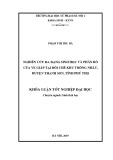

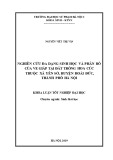







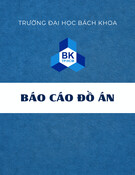
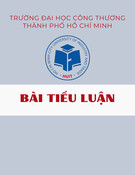
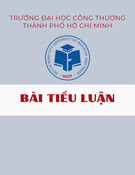
![Ô nhiễm môi trường không khí: Bài tiểu luận [Nổi bật/Chi tiết/Phân tích]](https://cdn.tailieu.vn/images/document/thumbnail/2025/20251011/kimphuong1001/135x160/76241760173495.jpg)
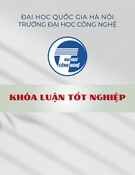
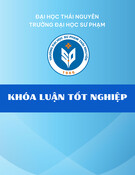




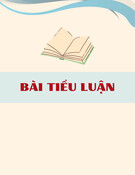
![Ứng dụng kỹ thuật trao đổi ion trong điện phân: Bài tiểu luận [chuẩn nhất]](https://cdn.tailieu.vn/images/document/thumbnail/2025/20250829/sonphamxuan1808/135x160/97341756442892.jpg)



